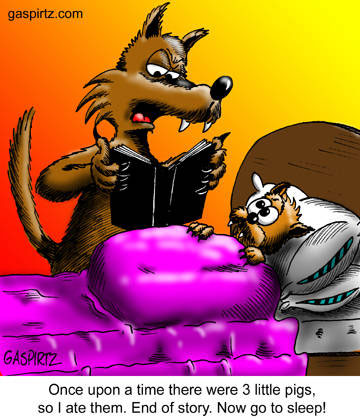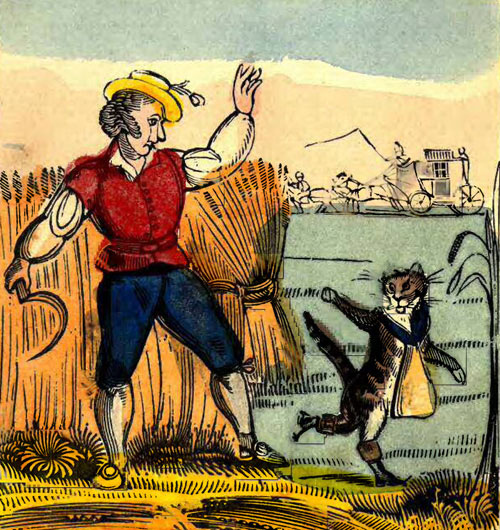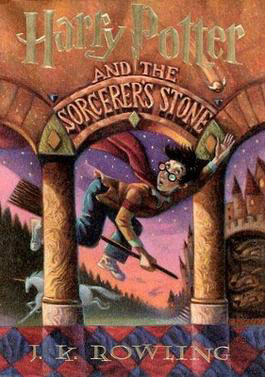Introduction

You may have heard the expression “There are two sides to every story.” This expression means that two people don’t usually see the same thing the same way. Imagine that you went to a carnival on Saturday from 2 to 4 p.m. One of your classmates also went to the carnival at the same time. You went because you love carnival rides, the scarier the better. Your classmate went because she is very good at carnival games and wanted to add to her prize collection. On Monday, you return to school and compare notes about your weekends. She tells you how easy it was for her to beat the new games on the midway, and you tell her how scary the new rollercoaster was. As you talk, you realize that it seems like you weren’t even at the same carnival! It seems that way because you are each sharing your experiences from your own point of view. Point of view is the perspective from which a story is told. Your classmate and you each told stories of your weekend from the first-person point of view. You each could only include details from the parts of the carnival you actually experienced. Authors choose a point of view from which to tell their stories. The details they include are decided by the point of view they use.
In this lesson, you will learn to analyze fiction told from the first-person, third-person limited, and third-person omniscient points of view.
Now, watch this video with an overview of first- and third-person points of view.
Images used in this section:
Source: Carnival, Heather Miller, Flickr
First-Person Point of View
First-person stories are told from the point of view of the narrator. The reader experiences the story through the eyes, ears, thoughts, and feelings of the narrator. The narrator uses phrases like I saw, I feel, I heard, and so on. While first-person point of view is easy to recognize, it’s important to remember that just like the scenario from the introduction to this lesson, the narrator is only including details that he or she experienced firsthand. As the reader, you need to determine whether you are getting the whole story and what might be missing from the narrator’s account.
Let’s use a familiar story to help you think about the importance of understanding point of view.

You are probably familiar with the story "The Three Little Pigs." Three pigs go into the world to seek their fortunes, and they encounter the Big Bad Wolf, who would love nothing more than to eat the little pigs. Each pig builds a house: one of straw, one of sticks, and one of bricks. The wolf huffs and puffs and destroys the first two houses and eats the pigs. When he gets to the brick house, the wolf can’t blow it down, so he slips down the chimney and ends up in a vat of boiling water. This fable isn’t usually told from the wolf’s point of view. There is somebody else telling the story about the wolf and the pigs, but let’s try reading the story as if it were told from the wolf’s point of view. Your job is to take what you already know about the story, listen to what the wolf is saying, and decide if he’s telling the truth.
Read the excerpt below from The True Story of the Three Little Pigs by A. Wolf by Jon Scieszka and Lane Smith (1989) for a first-person account of the story of the three little pigs.
Everybody knows the story of the Three Little Pigs. Or at least they think they do. But I'll let you in on a little secret. Nobody knows the real story because nobody has ever heard my side of the story. I'm the wolf. Alexander T. Wolf. You can call me Al. I don't know how this whole Big Bad Wolf thing got started, but it's all wrong. Maybe it's because of our diet. Hey, it's not my fault wolves eat cute little animals like bunnies and sheep and pigs. That's just the way we are. If cheeseburgers were cute, folks would probably think you were Big and Bad, too. But like I was saying, the whole Big Bad Wolf thing is all wrong. The real story is about a sneeze and a cup of sugar.
THIS IS THE REAL STORY.
Way back in Once Upon a Time, I was making a birthday cake for my dear old granny. I had a terrible sneezing cold. I ran out of sugar. So I walked down the street to ask my neighbor for a cup of sugar. Now this neighbor was a pig. And he wasn't too bright either. He had built his whole house out of straw. Can you believe it? I mean who in his right mind would build a house of straw? So of course the minute I knocked on the door, it fell right in. I didn't want to just walk into someone else's house. So I called, "Little Pig, Little Pig, are you in?" No answer. I was just about to go home without the cup of sugar for my dear old granny's birthday cake.
That's when my nose started to itch. I felt a sneeze coming on. Well I huffed. And I snuffed. And I sneezed a great sneeze.
And you know what? The whole darn straw house fell down. And right in the middle of the pile of straw was the First Little Pig—dead as a doornail. He had been home the whole time. It seemed like a shame to leave a perfectly good ham dinner lying there in the straw. So I ate it up. Think of it as a cheeseburger just lying there. I was feeling a little better. But I still didn't have my cup of sugar.
This excerpt is a great example of the power and challenges of reading in the first-person point of view. Because we are familiar with the story of the three little pigs, we can evaluate the wolf’s statements and decide whether we think the wolf is telling the “true” story (as he claims). However, you probably won’t know the backstory to much of what you read, so it is important to read first-person narration closely for clues that might help you determine whether the narrator is telling you the truth or his or her version of the truth.
How might a story from the pig’s point of view be different? You might try writing it just for fun!
Images used in this section:
Source: Gaspirtz, Cartoon of the Big Bad Wolf reading a bedtime story, Wikimedia.org
Third-Person Limited Point of view
Another commonly used point of view is third-person. In stories written in this point of view, the author uses words and phrases like he said, she felt, he thought, she saw, and so on. The story is told from the perspective of one character, just like in stories using first-person point of view. However, stories told in this point of view are more objective than stories told in first person because the narrator is outside the story looking in at events. The narrator can observe things that are happening around the main character that the character may not notice.
Read the following excerpt from Chapter 1 of The Giver by Lois Lowry (1993). The story is told about 11-year-old Jonas, who lives in a society where there is no conflict because everyone is basically the same. At age 12, all citizens are assigned a job based on their abilities.

It was almost December, and Jonas was beginning to be frightened. No. Wrong word, Jonas thought. Frightened meant that deep, sickening feeling of something terrible about to happen. Frightened was the way he had felt a year ago when an unidentified aircraft had overflown the community twice. He had seen it both times. Squinting toward the sky, he had seen the sleek jet, almost a blur at its high speed, go past, and a second later heard the blast of sound that followed. Then one more time, a moment later, from the opposite direction, the same plane.
At first, he had been only fascinated. He had never seen aircraft so close, for it was against the rules for Pilots to fly over the community.
Images used in this section:
Source: Master Sgt. Robert W. Valencia, B-1B Lancer, Wikimedia
Third-Person Omniscient Point of View
Omniscient means all-knowing. Third-person omniscient point of view is used when the author wants to tell the story from the perspective of more than one character. Using this point of view allows the reader to see the same events from different perspectives. It also allows the reader to witness events that are important to the story but aren’t experienced by all characters. For example, in the excerpt you read from The Giver, the unidentified plane was described as “frightening” from Jonas’s point of view, so as readers, we believe that Jonas had reason to be scared. What if another character’s point of view had been included, though, and he or she found the plane “exciting” or even “ordinary”? As readers, we would have more information to use to evaluate the situation.
Below is an excerpt from Chapter 1 of Harry Potter and the Sorcerer’s Stone by J.K. Rowling (1997). This chapter introduces the reader to some important information about the world that Harry Potter, a young wizard living in England, inhabits.
. . . At half past eight, Mr. Dursley picked up his briefcase, pecked Mrs. Dursley on the cheek, and tried to kiss Dudley good-bye but missed, because Dudley was now having a tantrum and throwing his cereal at the walls. "Little tyke," chortled Mr. Dursley as he left the house. He got into his car and backed out of number four's drive. It was on the corner of the street that he noticed the first sign of something peculiar—a cat reading a map. For a second, Mr. Dursley didn't realize what he had seen—then he jerked his head around to look again. There was a tabby cat standing on the corner of Privet Drive, but there wasn't a map in sight. What could he have been thinking of? It must have been a trick of the light. Mr. Dursley blinked and stared at the cat. It stared back. As Mr. Dursley drove around the corner and up the road, he watched the cat in his mirror. It was now reading the sign that said Privet Drive—no, looking at the sign; cats couldn't read maps or signs. . . .

The beginning of the chapter is clearly being told from the perspective of Harry Potter’s uncle and guardian, Mr. Dursley. We only know what the character of Mr. Dursley is thinking. For example, we don’t know what the cat thinks while reading the map. The third-person point of view is limited to Mr. Dursley. Later in that same chapter, long after the Dursleys have gone to bed, Albus Dumbledore appears. Then, the cat turns into Professor McGonagall. If the chapter had been written in a third-person limited point of view, the chapter would have ended when Mr. Dursley went to bed because the narrator would have been limited to only Mr. Dursley’s thoughts. By using an omniscient point of view, Rowling is able to switch from writing about Mr. Dursley and his thoughts to Dumbledore and his conversation with Professor McGonagall, which is excerpted below.
. . . A man appeared on the corner the cat had been watching, appeared so suddenly and silently you'd have thought he'd just popped out of the ground. The cat's tail twitched and its eyes narrowed. Nothing like this man had ever been seen on Privet Drive. He was tall, thin, and very old, judging by the silver of his hair and beard, which were both long enough to tuck into his belt. He was wearing long robes, a purple cloak that swept the ground, and high-heeled, buckled boots. His blue eyes were light, bright, and sparkling behind half-moon spectacles and his nose was very long and crooked, as though it had been broken at least twice. This man's name was Albus Dumbledore. Albus Dumbledore didn’t seem to realize that he had just arrived in a street where everything from his name to his boots was unwelcome. . . .
. . . "Fancy seeing you here, Professor McGonagall." He turned to smile at the tabby, but it had gone. Instead he was smiling at a rather severe-looking woman who was wearing square glasses exactly the shape of the markings the cat had had around its eyes. She, too, was wearing a cloak, an emerald one. Her black hair was drawn into a tight bun. She looked distinctly ruffled. "How did you know it was me?" she asked. "My dear Professor, I've never seen a cat sit so stiffly. . . .”

If J. K. Rowling only wanted to tell the story from Harry Potter’s perspective, this chapter would not be included in the novel because Harry’s point of view is not shown. The third-person omniscient point of view introduces the reader to the magical world Harry Potter is about to enter and gives the reader information that Harry will not learn until more of his story is told.
Now that you’ve reviewed the different points of view, complete the following activity.
Images used in this section:
Source: The Adventures of Puss in Boots Marks's Edition, EBook #37529, Project Gutenberg
Source: Original U.S. Cover of Sorcerer’s Stone, Wikipedia
Your Turn

Now that you’re familiar with first-person, third-person limited, and third-person omniscient points of view, complete the activity below.
Knowing a story’s point of view is an important element of fiction. Authors choose a point of view that suits the story they want to tell. First-person narration engages the reader and draws him or her into the story. Third-person narration is a little more objective than first-person narration. These narrators closely follow the perspective of one character, so the thoughts, feelings, and observations of that character are available. Third-person narration allows the reader to make up his or her mind about the validity of the events that are unfolding in a way that he or she can’t when the narration is first-person. Finally, while third-person omniscient narration can be confusing at times, it can be useful in helping readers understand an unfamiliar world by giving us insight into multiple characters’ thoughts and their perceptions of events that unfold in the story. When you read fiction, think about the point of view and why the author made that particular choice. How would the story be different if told from a different point of view?
Images used in this section:
Source: Rolf Brecher, E-type Point of View, Flickr
Resources
Lowry, L. (1993). The giver. New York: Houghton Mifflin.
Rowling, J.K. (1997). Harry Potter and the sorcerer’s stone. New York: Scholastic.
Scieszka, J, & Smith, L. (1989). The true story of the three little pigs by A. Wolf. New York: Penguin Putnam.